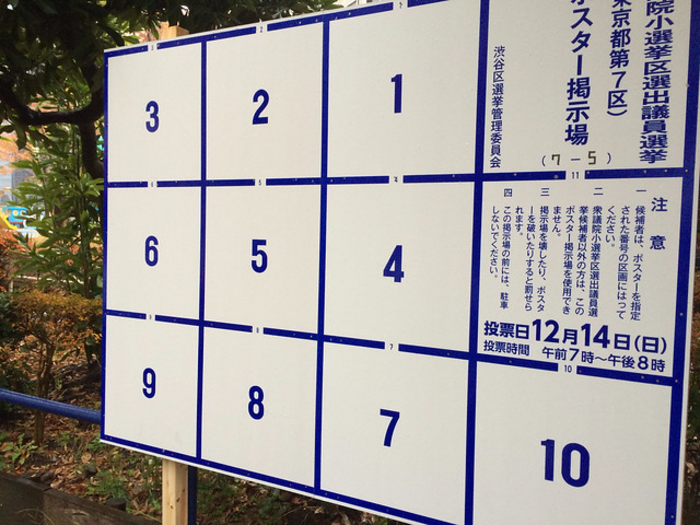The transformation of party politics in Japan has been marked by an array of sensational events, from the dominance of the Liberal Democratic Party (LDP) to party fragmentation. Individual legislators switch parties for a number of reasons, including policy considerations. The payoffs from “party switching” are closely linked to electoral and party systems, leading to a shift in the dynamics of party competition.

Credit: Tatsuo Yamashita
The transformation of party politics in Japan has been marked by an array of sensational events, from the dominance of the Liberal Democratic Party (LDP) to party fragmentation. Individual legislators switch parties for a number of reasons, including policy considerations. The payoffs from “party switching” are closely linked to electoral and party systems, leading to a shift in the dynamics of party competition.
In Japan, such a situation of party switching was witnessed before the 2017 election. The founding leader of a new party, “Hope,” aggressively politicized an inactive debate regarding defense policy. Several members were persuaded to join the Hope, resulting in the collapse of the largest opposition group, “Minshin,” into three parties. However, there remains a lack of explanation as to why the long-dormant disagreement culminated in such a severe rupture.
To uncover the underlying rationale, a Japanese research group consisting of Junior Associate Professor Tomoko Matsumoto of Tokyo University of Science, Associate Professor Hiroki Kubo of Meiji Gakuin University, and Professor Kentaro Yamamoto of Hokkai-Gakuen University, examined responses on “issue position” and the “salience of party policies” from an expert survey conducted shortly after the 2017 general elections. Speaking of the motivation of the study, Dr. Matsumoto says, “The frequent breakdowns of opposition parties have created uncertainty among voters. By analyzing the expert survey, we hope to understand the structure of oppositional party policies in Japan.” Their seminal study was recently published in Japanese Journal of Political Studies.
The researchers began by assessing the expert responses using the “differential-item functioning (DIF)” analysis of “Aldrich-McKelvey” scaling. They next employed “Blackbox transpose” scaling to examine the multidimensional nature of the issue stances. One important point raised by this study is that traditional DIF analysis assumes diversity in responses is due to perceptional limitations and biases. However, the diversity in this case meant that the parties were unable to discern and convey their policy positions. As a result, a corrected version of the DIF analysis is required. “When we performed the corrected DIF analysis, we realized that the corrected value differed from the average value of the raw data obtained from the responses. In other words, the importance of using responses after rectification was reaffirmed,” reveals Dr. Matsumoto. “This is a huge revelation since online surveys are increasingly being used for scientific research.”
The results revealed a strong discord among the splinter parties over defense policy. However, their opinions on the environment, decentralization, and other policies clearly coincided. This was most likely the foundation for the main opposition camp’s unity. Furthermore, DIF analysis revealed considerable differences in expert responses on the relevance of defense policy. As a result, the rapid politicization of defense policy may have contributed to its relevance, which in turn led to the split.
Although the study showed that the major opposition separated over defense policy disagreements, it also showed that splinter opposition parties agreed on environmental and decentralization policies. Dr. Matsumoto concludes, “Our findings suggest that party switching is triggered not just by policy disagreement, but also by the decision of which policy is politicized. This may help us comprehend the future dynamics between the ruling and opposition parties.”
Party competition and party systems are critical facets of parliamentary democracies. These findings go a long way towards improving our understanding of these political structures.
***
Reference
DOI: https://doi.org/10.1017/S1468109922000160
About The Tokyo University of Science
Tokyo University of Science (TUS) is a well-known and respected university, and the largest science-specialized private research university in Japan, with four campuses in central Tokyo and its suburbs and in Hokkaido. Established in 1881, the university has continually contributed to Japan’s development in science through inculcating the love for science in researchers, technicians, and educators.
With a mission of “Creating science and technology for the harmonious development of nature, human beings, and society”, TUS has undertaken a wide range of research from basic to applied science. TUS has embraced a multidisciplinary approach to research and undertaken intensive study in some of today’s most vital fields. TUS is a meritocracy where the best in science is recognized and nurtured. It is the only private university in Japan that has produced a Nobel Prize winner and the only private university in Asia to produce Nobel Prize winners within the natural sciences field.
Website: https://www.tus.ac.jp/en/mediarelations/
About Junior Associate Professor Tomoko Matsumoto from Tokyo University of Science
Tomoko Matsumoto is a Junior Associate Professor at Tokyo University of Science. In 2016, she received her PhD in Politics from The University of Tokyo. She formerly worked for two years as a Designated Lecturer at Nagoya University’s Graduate School of Law. She has also previously served as a Visiting Research Professor at New York University. Her areas of research include quantitative political science, public opinion, election, redistribution, and regime change. She has 12 articles, 6 publications, and 55 presentations to her credit. She has also peer-reviewed a number of publications and proceedings.
https://www.tus.ac.jp/en/fac/p/index.php?6fe3
Funding information
This work is financially supported by JSPS Grant-in-Aid No. 16H06852 and No. 18K12701
Journal
Japanese Journal of Political Science
DOI
10.1017/S1468109922000160
Method of Research
Survey
Subject of Research
People
Article Title
Party Switching and Policy Disagreement: Scaling Analysis of Experts’ Judgement
Article Publication Date
21-Jul-2022
COI Statement
None




